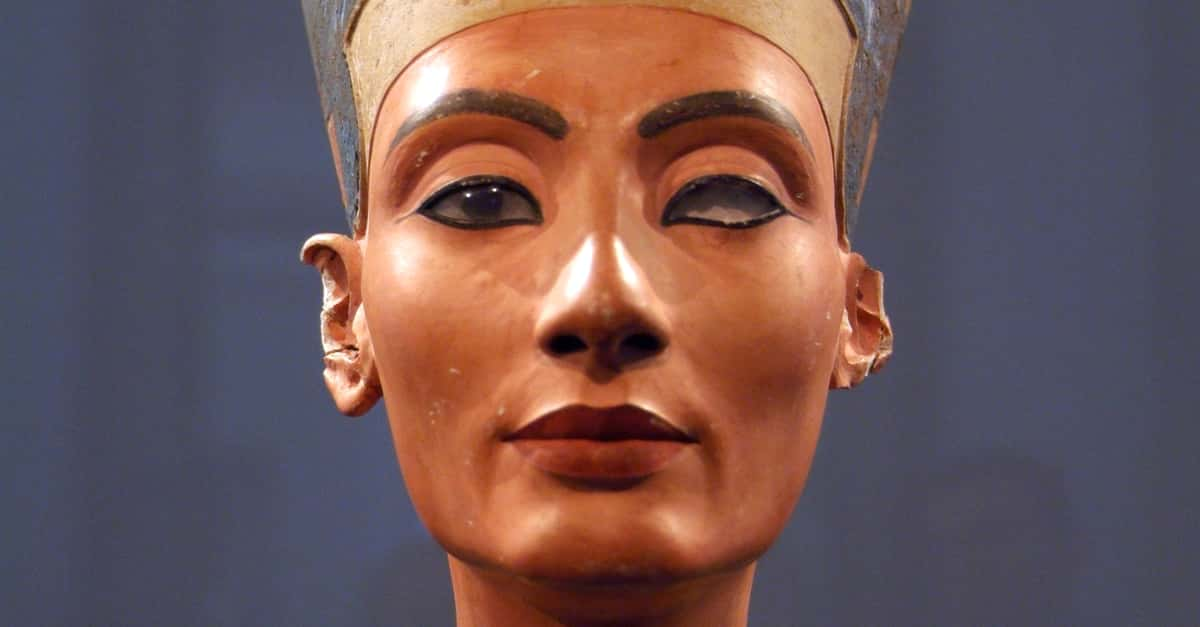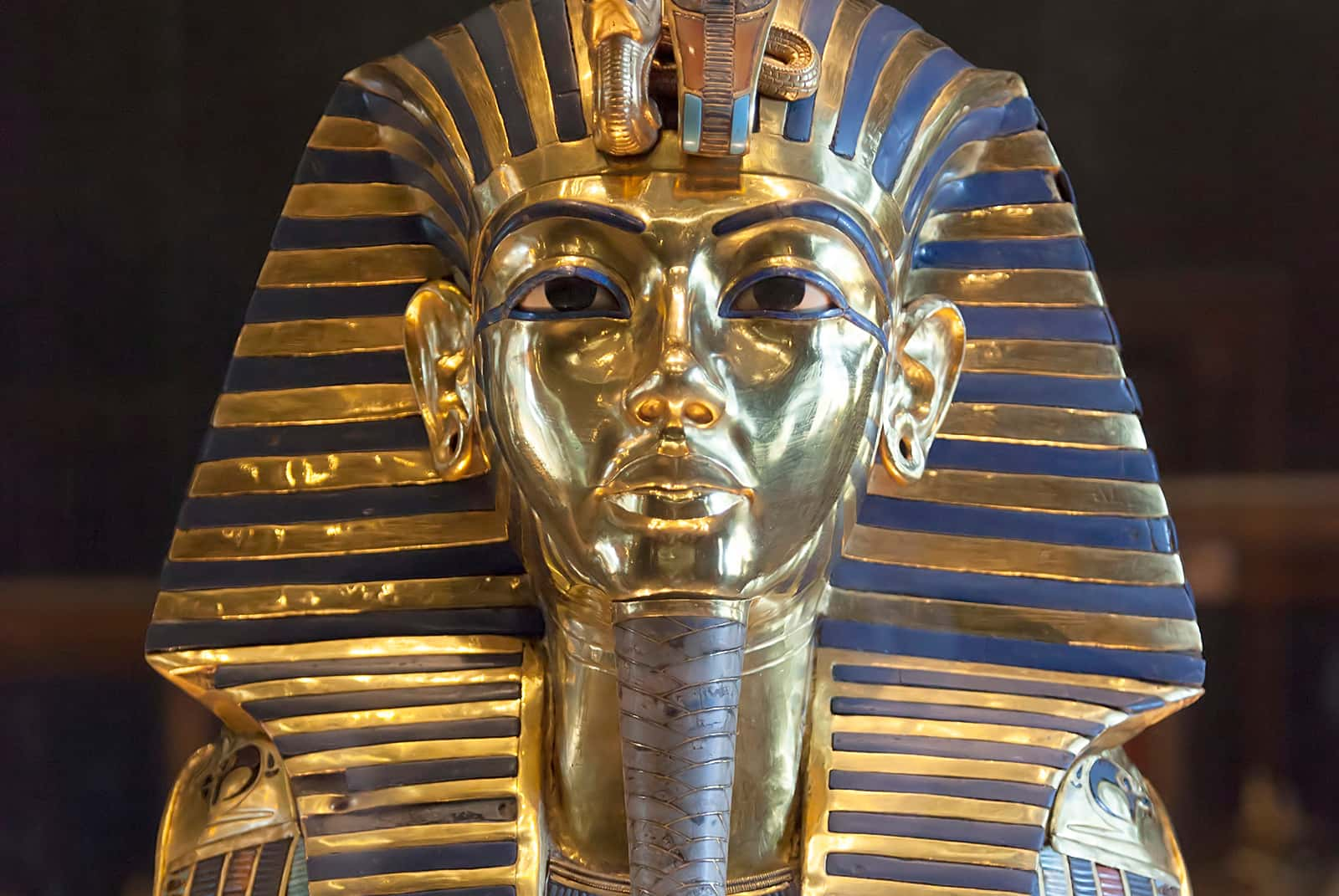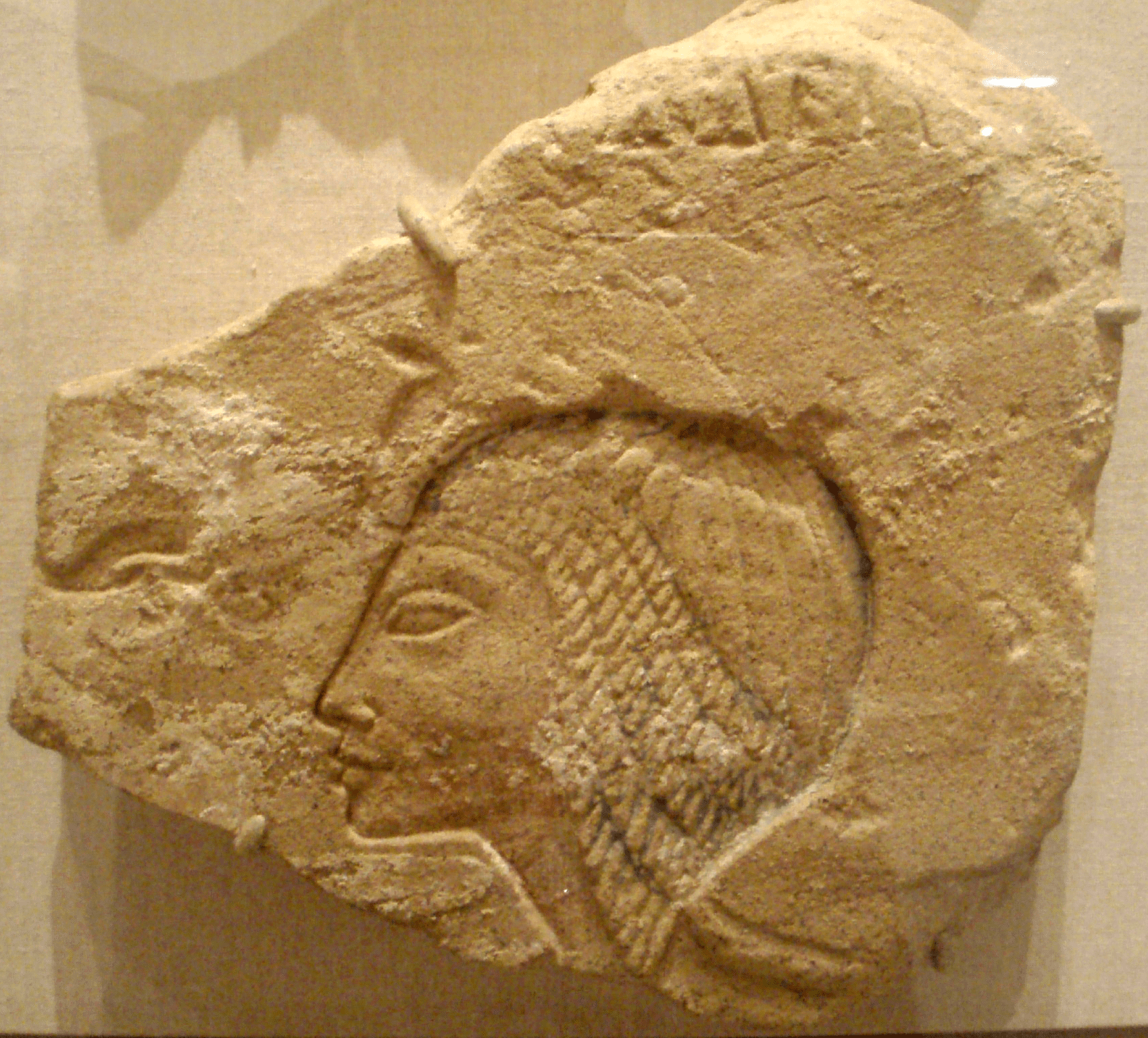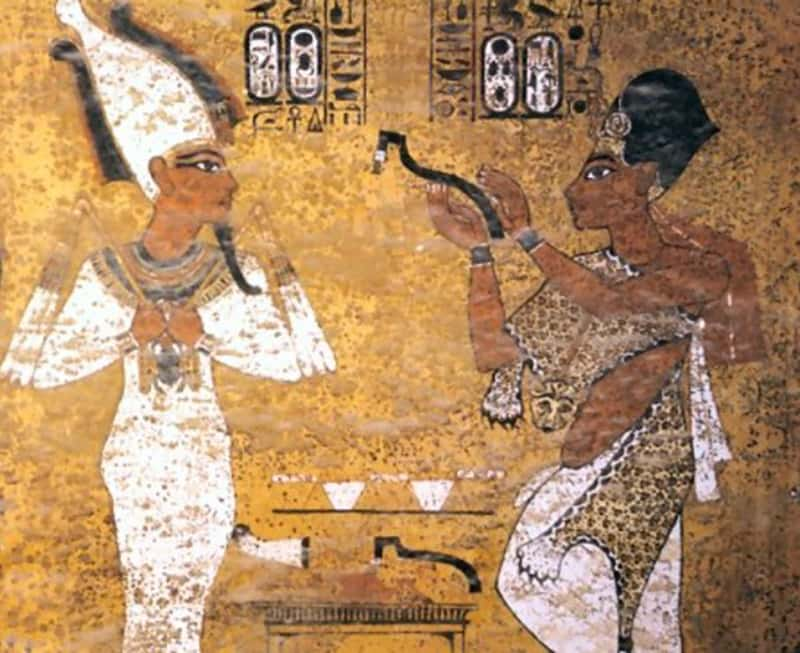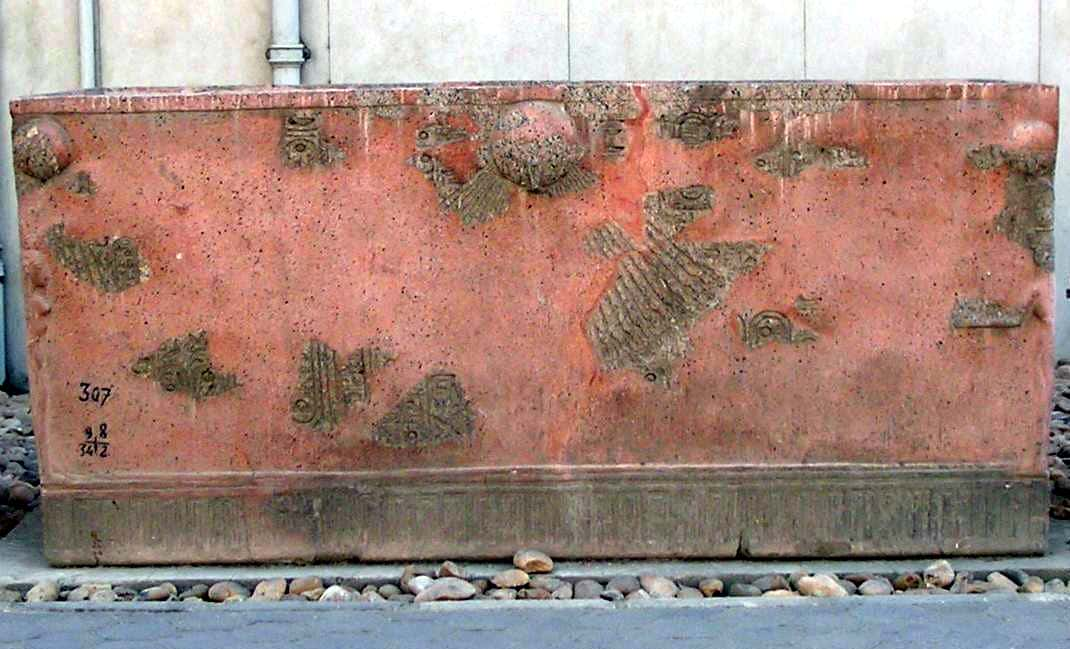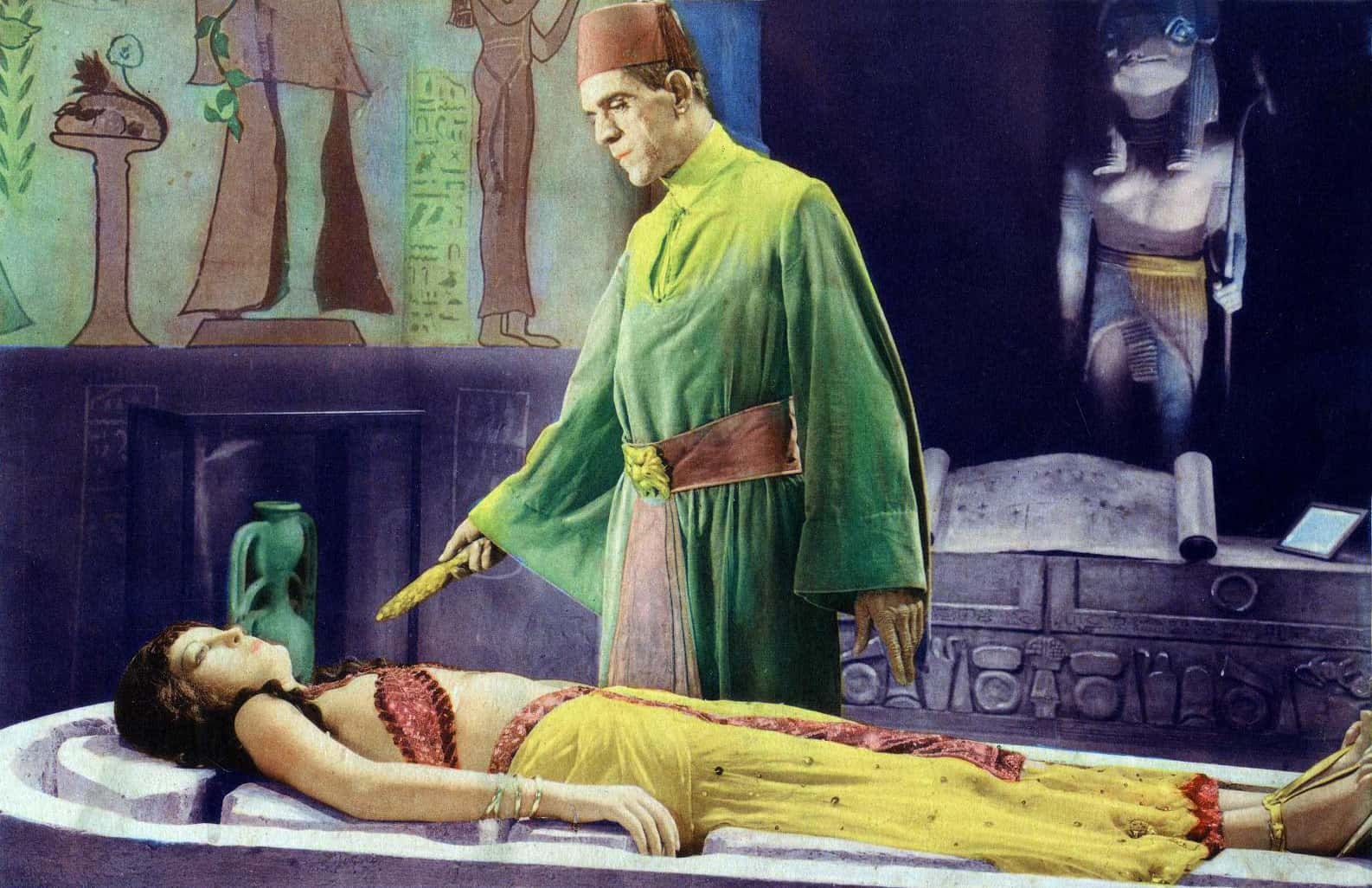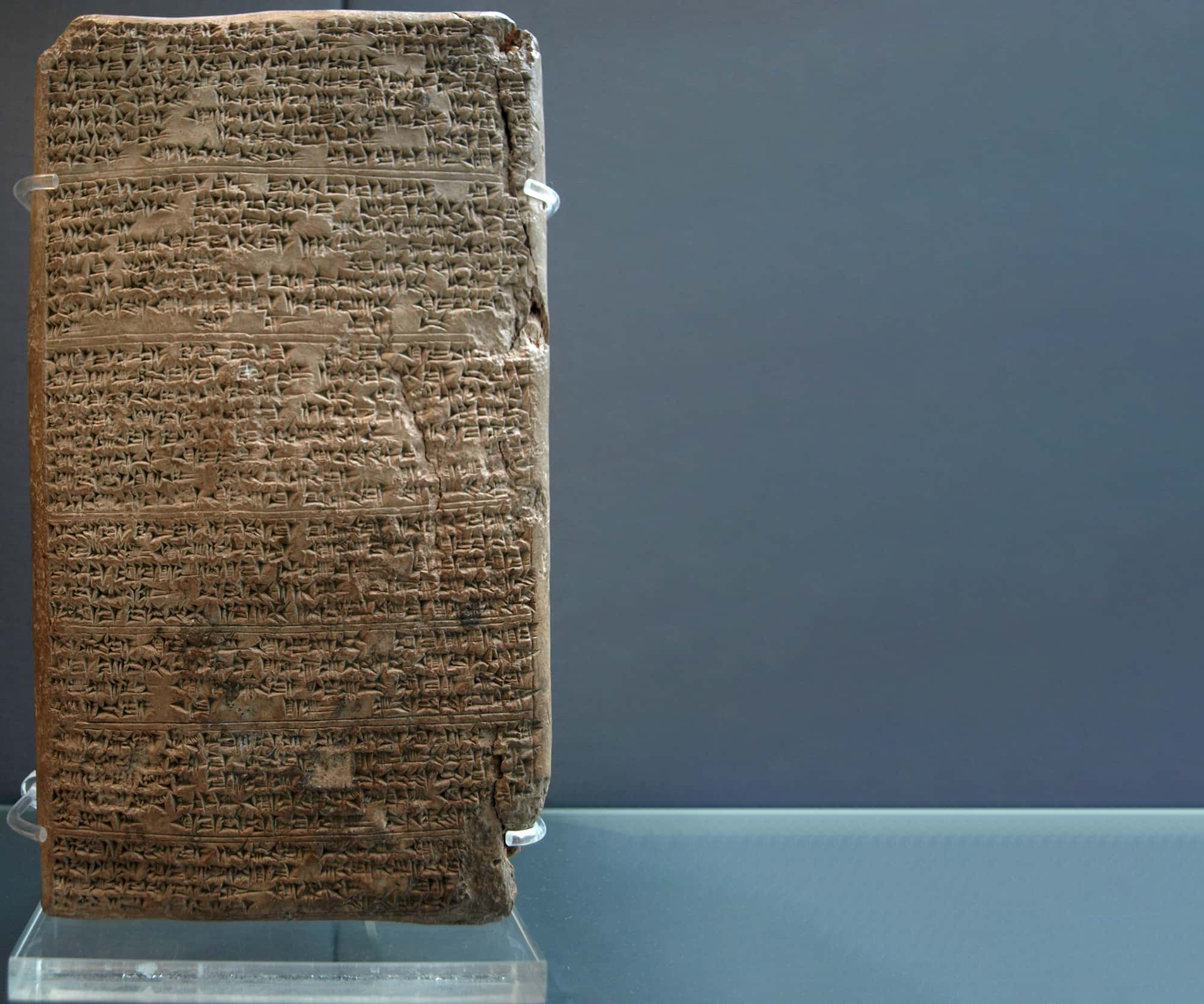You might not know who Nefertiti is, but you’ve definitely seen a reference to her at some point in your life. This ancient Egyptian queen is one of the most iconic figures of her time period, despite the fact that there is still a lot of mystery and speculation around her life and her legacy. Here are 42 influential facts about this legendary Queen of the Nile.
1. The Queen is Born
Historians have determined that Nefertiti was born in 1370 BC in the Egyptian city of Thebes—not the Greek one which shares the same name.

2. Guess I’m his Stepmother?
Nefertiti’s claim to fame was that she was the Great Royal Wife of Pharaoh Akhenaten, one of the last rulers of the 18th Dynasty. Akhenaten was the father of Tutankhamun, AKA the one Egyptian pharaoh anyone could name. However, we need to clarify that Nefertiti was not Tutankhamun’s mother.
3. A Rose by Any Other Name
The meaning of Nefertiti’s name, when translated into English, is “The Beautiful Woman Has Come". Frankly, based on the artwork that exists featuring her, we can’t disagree with that assessment!
4. Time for a Change
One reason why Nefertiti is so well-known is that she was a ruler of Egypt during a very big transitional period. She and her husband, Akhenaten, oversaw a departure from the worship of multiple gods which had been central to ancient Egypt. This faith was replaced by more singular worship of the sun god Aten.
5. Mysterious Sibling
Allegedly, Nefertiti had a sister named Mutbenret. Not much is known about her for sure, though she appears on hieroglyphs on several tombs. One theory is that she was the wife of the last Pharaoh of the 18th Dynasty. If this theory is true, Mutbenret married the man who potentially overthrew her own father’s rule as Pharaoh!
6. Speaking of Six…
It’s known that Nefertiti had at least six daughters with her husband, Akhenaten. These girls were named Meritaten, Meketaten, Ankhesenpaaten, Neferneferuaten Tasherit, Neferneferure, and Setepenre—more on them later.
7. Long May They Reign
Nefertiti belonged to what is known as the 18th Dynasty of Egypt. This dynasty was the first one which ruled the New Kingdom of Egypt. Members of the 18th Dynasty ruled Egypt from around 1549 BC–1292 BC. Quite an impressive run!
8. Missing Family Tree
It isn’t actually known who Nefertiti’s parents were. One of the prevailing theories is that Nefertiti was the daughter of Ay, who went on to be the chief advisor to King Tutankhamun and who later became Pharaoh after Tutankhamun’s end. While no sources actually confirm this theory, none contradict it either.
9. Are You My Mummy?
As to the subject of Nefertiti’s mother, there’s a whole other layer of doubt and dispute. If we are assuming that she was the daughter of Ay, Nefertiti’s mother would presumably be Tey, Ay’s wife at the time. However, antiquity makes no mention of Tey being the mother of Nefertiti, merely recording that she was Nefertiti’s nurse.
Historians have suggested that Ay had another wife who must have passed young, leading him to remarry with Tey.

History's most fascinating stories and darkest secrets, delivered to your inbox daily.
10. One of a Kind
The reason why Nefertiti is so well-known despite so little being known about her is because of a famous bust which immortalized her appearance. It is said to have been sculpted in 1345 BC by Thutmose, a man who served as the royal sculptor during his lifetime. The bust was discovered on December 6, 1912, in the ruins of Thutmose’s former workshop.
It has since become one of the most iconic artifacts of ancient Egypt.
11. Married for Life and After Life
Nefertiti’s image looms large in the contemporary artwork of her era, as well as the hieroglyphs left behind on tombs. In the case of her husband’s tomb, Nefertiti appears on all four corners of her husband’s sarcophagus.
12. Starting Early
Given how people lived much shorter lives back then, it shouldn’t surprise many people reading this to know how quickly people grew up and became adults when nowadays they wouldn’t even be allowed to get a tattoo on their own. In Nefertiti’s case, she became the queen of Egypt at the tender age of 15.
 Akhenaten and Nefertiti: The Royal Gods of Egypt (2002), BBC
Akhenaten and Nefertiti: The Royal Gods of Egypt (2002), BBC
13. That’s One Heck of a Business Card
Nefertiti wasn’t just known as the Queen of Egypt. She picked up a lot of titles in her time, including Hereditary Princess; Great of Praises; Lady of Grace, Sweet of Love; Lady of The Two Lands; Great King’s Wife, his beloved, Lady of all Women; and Mistress of Upper and Lower Egypt. How did she keep them straight?
14. Back with a Vengeance
Nefertiti is used as a villain in an expansion for the popular video game Assassin’s Creed: Origins. In the expansion titled “The Curse of the Pharaohs,” Nefertiti’s spirit has laid a vicious curse upon the Egyptian city of Thebes. The spirit needs to be defeated so it can finally rest in the afterlife.
15. First Girl
Nefertiti’s eldest daughter was named Meritaten. She is frequently portrayed alongside Nefertiti in hieroglyphs. Like her mother before her, Meritaten married a Pharaoh of Egypt. In her case, it was the short-lived Pharaoh Smenkhkare. Sadly, little is known about either of them due to the actions of Horemheb to erase part of Egyptian history.
16. We Now Call it the Beyoncé Effect
Let’s return to the Aten religion that Nefertiti and her husband established as the main religion of ancient Egypt. As was the case in ancient Egypt, the monarchs were seen as godlike, superior to their subjects in every way. Akhenaten only increased this claim to divinity, making himself and his wife linked to Aten as a triumvirate of godhood.
17. My Wife, the Goddess
Nefertiti specifically became known as a goddess, with emphasis placed on femininity, her body shape, and her beautiful wardrobe. We mentioned before that Nefertiti had six daughters, and this only played into her deified status as a symbol of fertility.
18. Third Girl
Akhesenamun was the third child of Nefertiti, and she later became the wife of King Tutankhamun. As most of you know, Tutankhamun did not reign for a long time, and it is unknown what exactly happened to Akhesenamun when she became a widow.
19. Keep It in the Family
Following Tutankhamun’s passing, the role of Pharaoh passed to Ay, the alleged father of Nefertiti and advisor to Tutankhamun. One theory is that Ay married Akhesenamun when he became Pharaoh, though that means he married his own granddaughter. Even House Targaryen would be shaking their heads at that one!
20. Losing My Religion (and Name)
When Nefertiti and her husband worked to expand the worship of the god Aten, they changed their names as part of their tribute. Akhenaten was actually a chosen name, as he’d originally been known as Amenhotep IV. For her part, Nefertiti changed her name to Neferneferuaten-Nefertiti.
21. Thanks, Honey!
During his reign, Nefertiti’s husband ordered the construction of a massive temple in honor of the god Aten. Part of the temple was an elaborate structure known as the Hwt Benben, and it was dedicated specifically to Nefertiti. Maybe it was their wedding anniversary and he wanted to go big?
22. Fake History!
Over the years of studying Egyptian hieroglyphs left behind in the temples, a theory emerged about what happened to Nefertiti during her later years. Archaeologists and historians pushed an idea that the Egyptian queen separated from her husband, Akhenaten, and went into a quiet retirement. However, this theory has been discredited in recent years.
 Akhenaten and Nefertiti: The Royal Gods of Egypt (2002), BBC
Akhenaten and Nefertiti: The Royal Gods of Egypt (2002), BBC
23. So Many Hypotheses!
A lesser-known theory about Nefertiti’s mysterious parentage is that she could be the daughter of Tadukhipa, a princess of an ancient kingdom called Mitanni. This theory stems from the fact that Nefertiti’s name has a slightly foreign sound to it compared to some of the more common names found in ancient Egyptian society.
Of course, you’d have to be an Egyptologist to know that, so you could have fooled us!
24. That’s One Way to Do It
As mentioned earlier, Tutankhamun wasn’t Nefertiti’s son. This is because she never produced a male heir for her husband, and so he fathered Tut with either one of his sisters or his cousins.
25. Basically, I Rule!
Such was Nefertiti’s power during her lifetime, based on the depictions of her performing tasks normally assigned to Pharaohs, that she was classified as co-regent rather than just a queen. Some historians suspect that she even outlived her husband and was, at the very least, an influential advisor to younger rulers which followed after—more on that later.
26. Pun Warning
In 1992, Michael Jackson released an ambitious single titled “Remember the Time". The single was accompanied by a nine-minute video which was directed by acclaimed director John Singleton and was set in ancient Egypt. The video’s cast included actress and fashion model Iman, who portrayed Nefertiti. We’re not sure if it was a “Bad” performance, though.
27. Don’t Cross Me!
While queens in ancient Egypt didn’t always enjoy a lot of power in their own right, Nefertiti seems to have been an exception. Artistic depictions of Nefertiti which survive today often depict the queen beside the Pharaoh and performing tasks or standing in positions normally reserved for Pharaohs.
28. That’s Her, Alright!
It’s worth pointing out that the Nefertiti bust isn’t actually labeled by the artist as being the queen. However, despite the lack of inscriptions, historians have confirmed the bust as representing Nefertiti because of the iconic crown that the bust carries.
29. The Higher the Hair, the Closer to God
Other representations of Nefertiti also portray the crown, which (rather randomly) later served as an inspiration for the hairstyle of Elsa Lanchester’s titular character in Bride of Frankenstein!
30. Nation vs. Nation
Going back to Nefertiti’s famous bust, there has been a long-running controversy regarding where it is kept. The man who discovered the bust, German archaeologist Ludwig Borchardt, brought it back to Germany. Ever since it was first publicly displayed in 1924, Egyptian governments have repeatedly demanded that the bust be returned to Egypt, even claiming that it was taken out of the country illegally.
31. Finders Keepers
For their part, the Germans have insisted that it was legally exported, and are reluctant to give it back as they attached their own national identity to the bust, especially when Germany was split in half following WW2.
32. We’re Left Shrugging Our Shoulders
Long before she was queen, Nefertiti was a faithful follower of the god Aten, and it’s been suggested that she herself was the driving influence behind the establishment of Aten worship as the primary religion in Egypt. Whether she did push her husband to do that, or whether he was just on the same page as her will never be confirmed either way.
33. And Like That, She’s Gone
It is unknown when, where, or how Nefertiti perished. What is known is that illustrations of her disappear around the 14th year of her husband’s reign as Pharaoh.
34. Laid to Rest
According to a bizarre theory, many of the infamous mysteries of Tutankhamun’s tomb could be attributed to the fact that it might have been originally built for Nefertiti! The wall markings indicating a hidden doorway and the small size of the tomb have led some to believe that it was built for a Queen, but that the real estate was passed on to Tut after Nefertiti “disappeared".
35. The Lost Queen
Despite the years of exploring old Egyptian tombs, Nefertiti’s body has never been identified. It’s possible that she is among the many unidentified mummies who have been discovered over the years, but it is unlikely that it will ever be confirmed or denied at this point.
36. Secret Secret, I’ve Got a Secret
We mentioned Pharaoh Smenkhkare, who ruled Egypt for a brief moment in time while married to Nefertiti’s daughter. However, there is a rather remarkable theory among historians that Smenkhkare was actually Nefertiti, ruling behind a male name. The theory states that she ruled as a female king before relinquishing her position to Tutankhamun.
Given that he was her stepson and married to one of her daughters, it makes sense that he’d be Nefertiti’s heir.
37. Ancient Artifact
Alongside ancient Egypt, there was the ancient Hittite Empire. The capital of this empire was Hattusa, and a remarkable document was once discovered within its ruins that has miraculously survived to this day. The document is addressed to King Suppiluliuma I, and it is a request from an Egyptian queen which is believed by some to have been Nefertiti.
What makes this document extra remarkable, however, are its contents.
38. An Offer You Can’t Refuse
Addressed to the Hittite king from an unidentified Egyptian queen—possibly Nefertiti—who was in some form of siege or trouble, a letter was sent begging him for someone. Specifically, the queen wanted the king to send one of his sons to marry her, as she was a widow without male children. King Suppiluliuma I was incredulous, as the queen was clearly willing to make Egypt a client kingdom to the Hittites.
39. Missed Connection
However, the opportunity was missed because Suppiluliuma I literally couldn’t believe his luck. He delayed by sending an envoy to verify the truth, and then when he did send a son of his to Egypt, he was gone before he could arrive. It’s implied that the son was ended at route, but there were no suspects for the deed.
40. Lovebirds
The artwork depicting Nefertiti and Akhenaten reveals a surprising aspect about the couple, not usually seen in artwork depicting royal couples. They are often shown as quite physically close, which was uncommon at the time. They’ve been depicted riding in chariots together and kissing in public, among other things.
41. The Mystery
Many theories abound over the story of why Nefertiti was no longer depicted in the hieroglyphs. Given that her daughter had lost her life in childbirth shortly before this—one of the last images left behind of Nefertiti is a depiction of her mourning her daughter—it’s been suggested that she may have taken her own life in despair.
42. Blasphemers Will Be Banished
Another theory suggests that she abandoned the faith which she and her husband had established and was thus exiled. Since we likely won’t ever find out, feel free to offer up a suggestion of your own!

